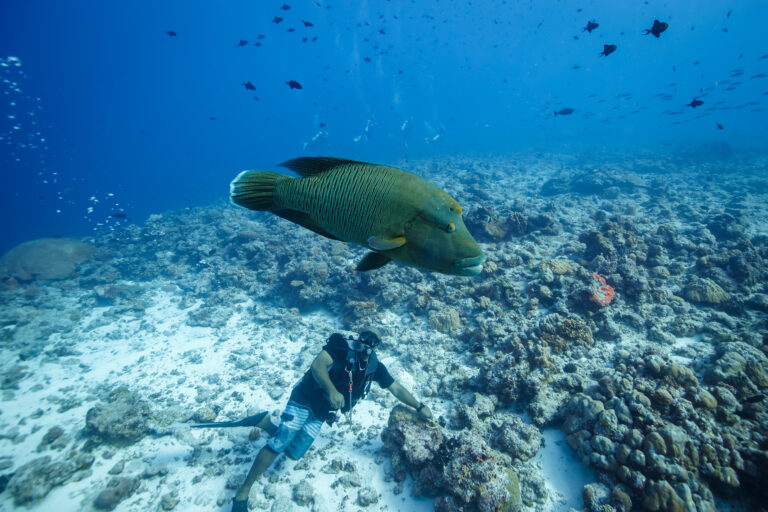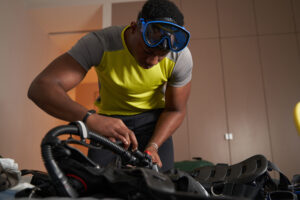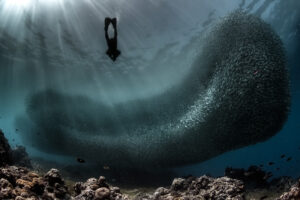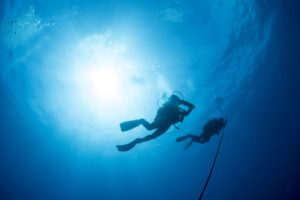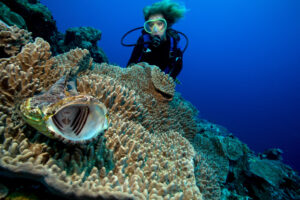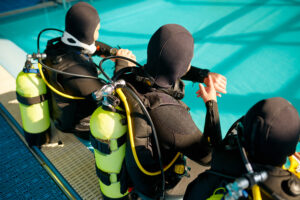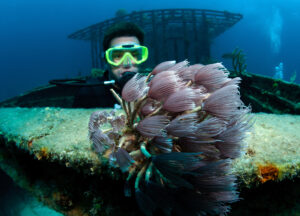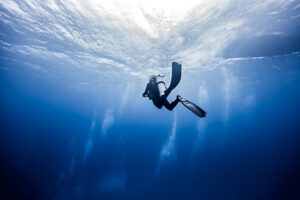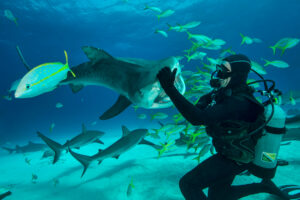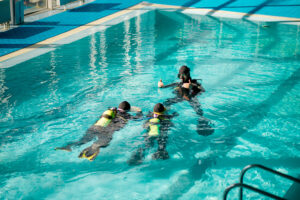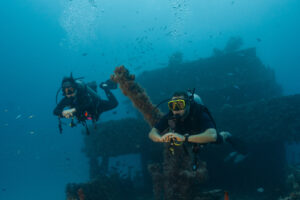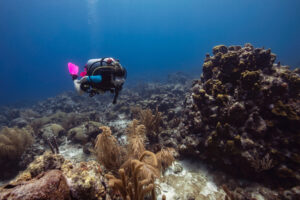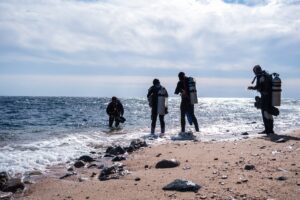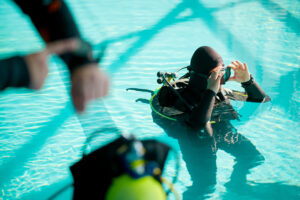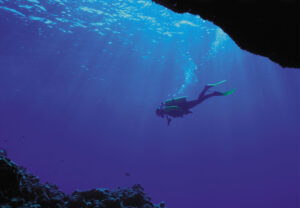What is a No Decompression Dive?
A no decompression dive is a type of underwater diving where the diver can ascend directly to the surface without needing to perform decompression stops. This concept is fundamental to recreational diving, ensuring that divers can enjoy underwater exploration while minimizing the risks associated with decompression sickness. Decompression sickness, often referred to as “the bends,” occurs when dissolved gases, primarily nitrogen, come out of solution in the blood and tissues, forming bubbles as pressure decreases during ascent. By adhering to no decompression limits (NDL), divers avoid the critical levels of gas absorption that necessitate staged ascents, making their underwater adventures safer and more manageable.
Understanding Decompression
Decompression is a crucial concept in the context of diving, referring to the process of reducing the pressure exerted on the body as a diver ascends to the surface. When a diver descends, the pressure increases, causing more nitrogen from the breathing gas to dissolve into the body’s tissues. This is governed by Henry’s Law, which states that the amount of gas dissolved in a liquid is proportional to the pressure of the gas. As the diver stays longer at depth, more nitrogen is absorbed.
The danger arises during ascent. If a diver ascends too quickly, the rapid decrease in pressure can cause nitrogen to come out of solution too quickly, forming bubbles in the bloodstream and tissues. These bubbles can cause decompression sickness, leading to symptoms ranging from joint pain and rashes to paralysis and even death in severe cases. To prevent this, divers perform staged decompression stops, allowing the nitrogen to be released slowly and safely.
However, no decompression dives operate within specific limits that prevent the need for these stops. By managing their time and depth carefully, divers can ensure that the levels of nitrogen absorbed remain within safe limits, allowing a direct ascent to the surface without risking decompression sickness. This approach requires careful planning and adherence to established guidelines, underscoring the importance of understanding decompression dynamics.
Principles of No Decompression Dives
The principles of no decompression dives hinge on the concept of no decompression limits (NDL), which dictate the maximum time a diver can spend at a given depth without requiring decompression stops during ascent. These limits are determined through extensive research and are influenced by various factors, including depth, time, and individual physiological differences.
NDLs are typically provided in dive tables or dive computers, which are essential tools for managing no decompression dives. Dive tables list the maximum allowable times for different depths, whereas dive computers provide real-time calculations based on the diver’s actual profile. These devices account for changes in depth and time, offering a dynamic and precise measure of NDLs.
Several factors influence the determination of NDLs. Depth is the most critical factor, as the deeper a diver goes, the shorter the allowable bottom time due to increased nitrogen absorption. Water temperature, exertion levels, and individual susceptibility also play roles. Cold water, for example, can increase nitrogen absorption rates, reducing NDLs. Similarly, high levels of physical exertion can enhance nitrogen uptake, necessitating more conservative limits.
Comparatively, no decompression dives differ from decompression dives in that the latter involves exceeding NDLs, necessitating planned stops during ascent to allow for safe nitrogen elimination. While decompression dives enable longer bottom times and deeper explorations, they come with increased complexity and risks. No decompression dives, on the other hand, provide a safer and more straightforward approach for recreational divers, ensuring that the ascent to the surface can be made directly and safely.
Equipment and Preparation
Proper equipment and preparation are paramount for conducting no decompression dives safely. Essential gear includes dive computers, depth gauges, and dive tables, all of which play a crucial role in managing and monitoring no decompression limits.
Dive computers are indispensable tools for modern divers, offering real-time monitoring of depth, time, and NDLs. These devices continuously calculate and display the remaining no decompression time based on the diver’s current profile, allowing for precise management of the dive. They also factor in ascent rates and can alert divers if they are approaching or exceeding their NDLs, providing an additional layer of safety.
In addition to dive computers, depth gauges and dive tables are also important. Depth gauges provide accurate readings of the diver’s current depth, which is essential for adhering to NDLs. Dive tables, while less commonly used in the era of digital dive computers, offer a reliable backup and a means of planning dives in advance. Divers can use these tables to determine their allowable bottom time at various depths, ensuring that they stay within safe limits.
Preparation for no decompression dives also involves meticulous dive planning. Divers must plan their profiles carefully, considering factors such as maximum depth, bottom time, and ascent rate. This planning helps ensure that NDLs are not exceeded and that the dive can be conducted safely. Additionally, divers should always conduct pre-dive checks of their equipment, verify their dive plans with their buddies, and ensure that they are physically and mentally prepared for the dive. This comprehensive preparation is crucial for minimizing risks and maximizing the safety of no decompression dives.
Safety Protocols
Adhering to safety protocols is critical for ensuring the safety and success of no decompression dives. These protocols encompass various measures designed to prevent incidents and manage emergencies effectively.
One of the fundamental safety measures is maintaining proper buoyancy control. Accurate buoyancy management helps divers avoid rapid ascents or descents, which can lead to exceeding NDLs or other dangerous situations. Using a buoyancy control device (BCD) and being proficient in its operation is essential for maintaining a stable depth throughout the dive.
In the event of an emergency where NDLs might be exceeded, divers must be prepared to execute proper procedures. If a diver inadvertently stays at depth too long, they should ascend slowly and perform a safety stop at 5 meters (16.4 feet) for 3-5 minutes to allow additional nitrogen to be released from their tissues. If symptoms of decompression sickness occur, immediate medical attention is necessary, including administration of oxygen and transport to a hyperbaric chamber.
Communication is another vital aspect of safety in no decompression dives. Divers should establish clear hand signals and other communication methods with their dive buddies before the dive. Effective communication helps in managing the dive plan, monitoring each other’s status, and responding promptly to any issues that arise.
Buddy checks are an essential routine before every dive. These checks involve verifying each other’s equipment, ensuring that all gear is functioning correctly, and confirming that both divers understand the dive plan. This collaborative approach enhances safety and ensures that potential issues are identified and addressed before entering the water.
Advantages and Limitations
No decompression dives offer several advantages, making them popular among recreational divers. One significant benefit is the ability to enjoy longer bottom times within safe limits, as divers can explore without the need for lengthy decompression stops. This makes no decompression dives particularly suitable for shorter, more frequent dives, allowing divers to maximize their underwater experience.
Another advantage is the reduced complexity of dive planning and execution. Without the need for decompression stops, divers can plan their ascents more straightforwardly, reducing the risk of errors and the associated hazards of decompression sickness. This simplicity also translates to shorter surface intervals between dives, as nitrogen levels remain within safe limits, allowing for more frequent diving opportunities.
However, no decompression dives also come with limitations. Depth and time restrictions are primary constraints, as divers must adhere to NDLs to avoid the need for decompression stops. This limits the duration and depth of the dives, which can be a drawback for those seeking to explore deeper or spend extended periods underwater.
Environmental factors such as cold water and strong currents can also affect no decompression dives. Cold water increases nitrogen absorption rates, reducing allowable bottom times, while strong currents can complicate buoyancy control and ascent rates. Divers must account for these factors in their planning to ensure safety.
Common Misconceptions
There are several common misconceptions about no decompression dives that need clarification. One frequent misunderstanding is the belief that no decompression dives are entirely risk-free. While these dives reduce the risk of decompression sickness, they are not without hazards. Divers must still manage their depth and time carefully and adhere to safety protocols to avoid incidents.
Another misconception is the confusion between no-stop limits and no decompression limits. No-stop limits refer to the maximum time a diver can spend at a particular depth without needing a decompression stop, whereas no decompression limits involve managing nitrogen absorption to avoid the need for staged ascents altogether. Understanding this distinction is crucial for proper dive planning and safety.
Some divers also mistakenly believe that using enriched air nitrox eliminates the need for adhering to NDLs. While nitrox can extend bottom times by reducing nitrogen absorption, it does not eliminate the risks associated with exceeding NDLs. Divers using nitrox must still monitor their depth and time closely and use dive computers or tables designed for nitrox mixtures.
Key Takeaways
No decompression dives represent a fundamental aspect of recreational diving, allowing divers to ascend directly to the surface without requiring decompression stops. Understanding the principles, equipment, safety protocols, and limitations of no decompression dives is essential for ensuring safe and enjoyable underwater experiences. By adhering to no decompression limits and following established guidelines, divers can minimize risks and maximize their time exploring the underwater world.

